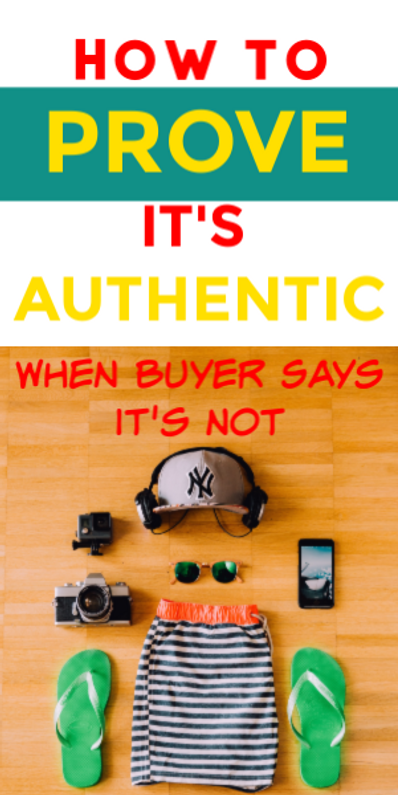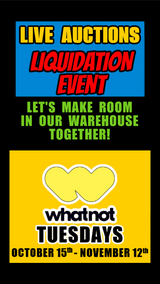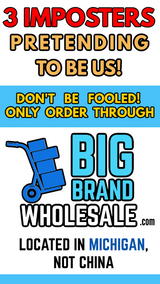5 Easy Ways! How to Prove a CLOTHING Item is Authentic When Buyer Says It's Not
Sometimes you may find yourself in a position where a buyer is insisting an item is not authentic. Typically, it's a really bizarre conversation because the reasoning the buyer is using doesn't make any sense. Over the past 15 years in business we have had people say the strangest things regarding authenticity, here's a couple examples:
Buyer claims a Victorias Secret item is fake because the tag says "Made in China", but Victorias Secret regularly manufacturers in China, Bangladesh, Indonesia, Canada and more... so it is perfectly normal for a tag to say "Made in China" being that they manufacture there.
Buyer claims a Guess brand tank top is fake because it is "100% Cotton". According to this buyer, Guess doesn't use cotton. Also, very strange because Guess does indeed use Cotton.
Buyer claims an item that says "100% Silk" isn't "100% Silk" because "It doesn't look like it". To this day, I still have not the slightest clue how to prove something is made of 100% Silk when the tag says "100% Silk", but I was able to prove that the scarf was indeed a legit Calvin Klein Brand.
So let's discuss how to PROVE the merchandise in question is totally legit.
METHOD #1 - CHECK THE RN NUMBER
The often overlooked way to prove an item is authentic, or to check the Authenticity of an item is to look up the RN Number. Pretty much ALL clothing sold in the USA will have an RN Number on the interior tags. Sometimes you have to look for a bit to find it. Often the RN Number is located on the inside of the item but NOT on the manufacturers tag. Usually, it is easiest to find the "Hem Tag" by turning the item inside-out.

Now you can see the RN number for this specific item is #36543. The next step is for us to go to the United States Government FTC website and look it up:
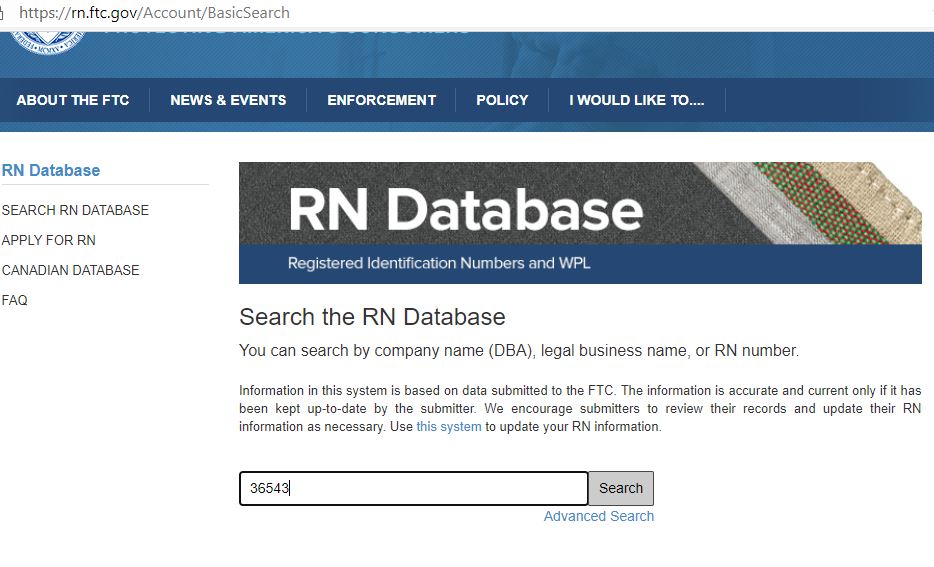
When we look this item up, this is the results we get:
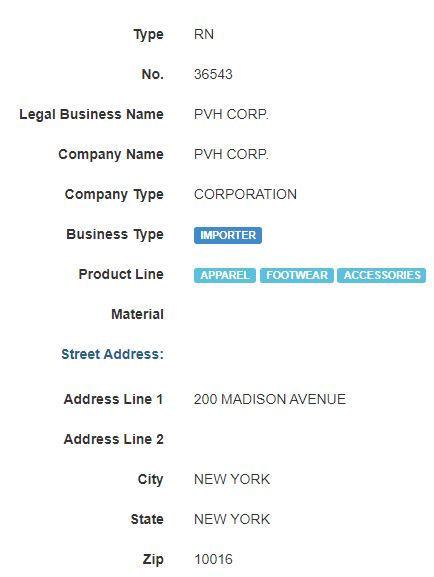
So, you can see PVH CORP owns this item. Now you can Google Search PHV Corp:
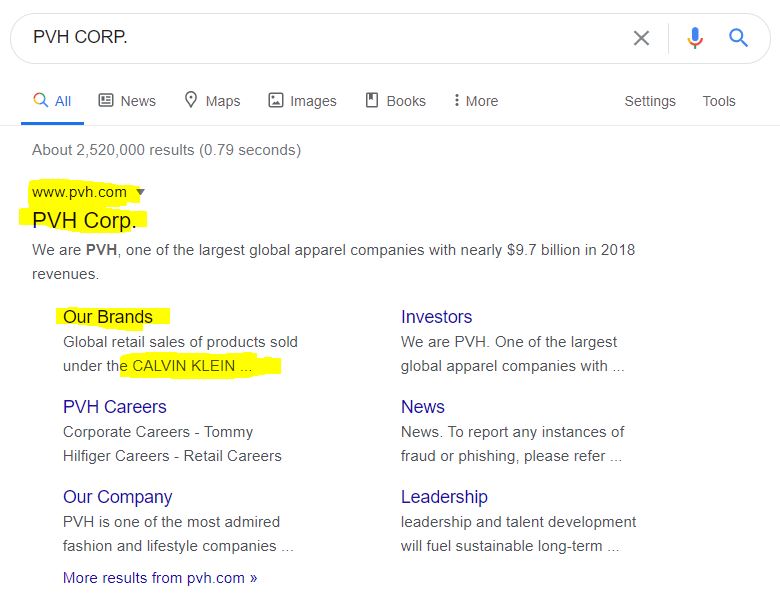
And you will see PVH Corp is who owns Calvin Klein. Look how easy that was; just find the RN, look it up then Google the result. Such an easy way to tell if an item is real! ***NOTE: RN Numbers started being used in 1952. If the item in question pre-dates 1952 it will NOT have an RN NUMBER because they didn't exist back then!
Remember that counterfeiters do NOT want to invest money in paying for extra tags. It costs a lot of money to add Hem-Tags, embroidery, printing, let alone multiple pages of interior tags. Typically, counterfiet merchandise will be as simplistic as possible. Often the "interior tag" is screen-printed instead of sewn-in. Usually there is NO interior hem-tag and if there is, the interior hem-tag information will NOT match the item at all. For example, if you suspect an item to be fake and you look up the RN data, it will come back as a Hanes brand shirt instead of Calvin Klein. This is because the fraudster bought bulk Hanes tees to print fake CK graphics on.
METHOD #2 - COPYRIGHT
Not all items will have a copyright, but most big brands do. DO NOT CONFUSE THE COPYRIGHT WITH THE "Born On Date". The Copyright date will be the date the Copyright was received, which can be totally different from the date the garment was made:
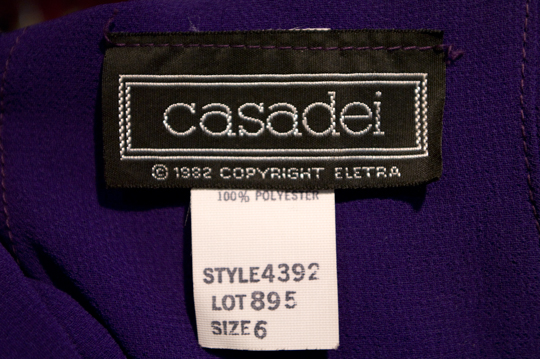
The copyright might be embroidered, like on the tag shown above or it could be printed on the manufacturers tag or the Hem-Tag or both.
METHOD #3 - CA NUMBERS
A CA Number is Canada's version of the RN Number, Usually, a CA Number and RN Number will be printed together on the interior tag. NOT ALL APPAREL WILL HAVE A CA NUMBER but pretty much ALL Big Brands have CA Numbers and RN's. Here's the Hem-Tags of an authentic Hollister brand hoodie that show the RN and the CA:
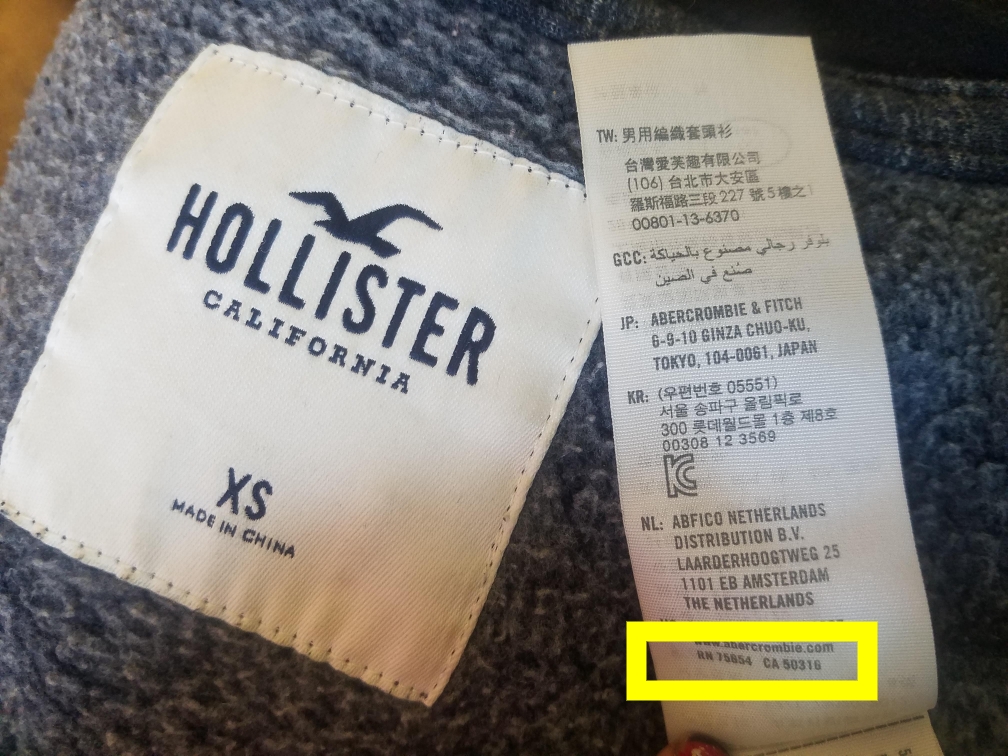
METHOD #4 - ADDRESSES
The amount of information the interior tags contain is insane! The same authentic Hollister hoodie also contains the address of the Brand-Holder, which is Abercrombie & Fitch:
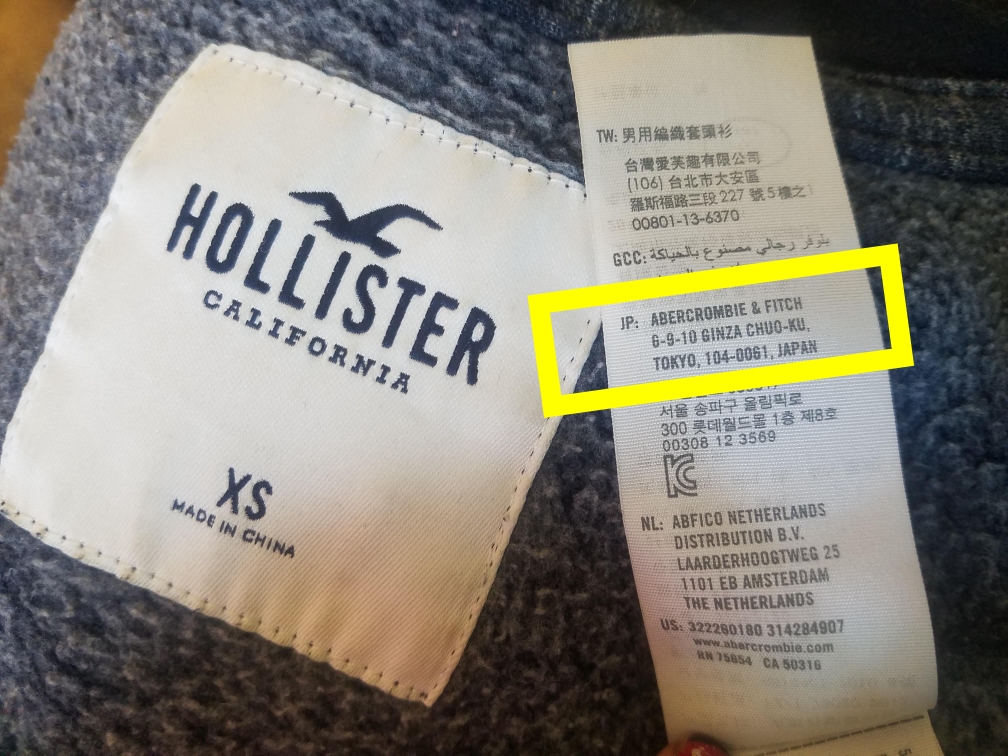
However, in this case, you can also view the address for "ABFICO" (Abercrombie & Fitch Company) located in Netherlands. In fact, you can even Google Search the address 1101 EB Amsterdam, Netherlands and you will see the information about Abercrombies distribution company.
METHOD #5 - STICKERS
This may sound silly, but it's 100% true! Counterfeit products do not contain clearance stickers!
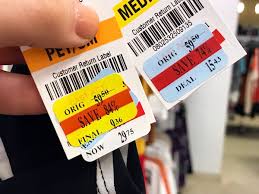
As mentioned previously, a counterfeit manufacturer wants to spend as little money and time as possible creating their fake item. They do not want to spend money on clearance stickers and they do not want to spend time applying clearance stickers! If the item has a clearance sticker, it is most likely 100% legit! Additionally, stores like M*CYS, BL**MINGDALES and N*RDSTR*M often apply a tag or sticker that says their store name on it:
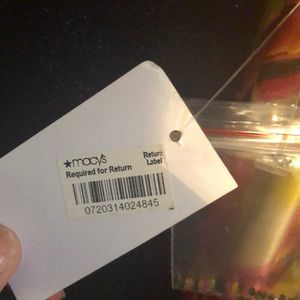
This helps THEM see that the item is authentic! M*CYS usually prints the UPC or item number on the M*CYS sticker. N*RDSTR*M usually adds a special tag to the item. The tag usually looks something like this:
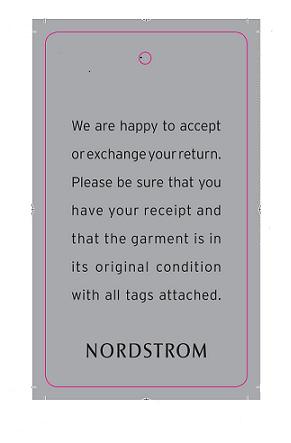
But sometimes it just has the company logo. It is a nice quality tag... yet another sign that the merchandise is totally legit. HOWEVER... IF you are buying the item through a LEGITIMATE WHOLESALER, or ANYONE WHO HAS PERMISSION TO SELL THE ITEM, they are REQUIRED TO REMOVE THIS SPECIFIC TAG!!! Just letting you know!
IF BUYER STILL INSITS IT'S NOT REAL - The reality is, most likely, the buyer just doesn't WANT the item. It might not fit or maybe they had a "mind change", but they want YOU to pay for return shipping, so they are trying to find a way to manipulate the situation. Unfortunately, this does happen, especially when you sell individual items directly to consumers. So now you have a couple options:
#1 - You can politely ask the buyer what their actual evidence is that the item is counterfeit and explain it is authentic and you have beyond proven it. (You and I both know that the buyer has 0 actual evidence. Yes, Guess makes 100% cotton tank tops). BUT you can offer to accept a return. You could be a peach and offer to pay half, or all, of return shipping just to avoid endless back-and-fourth and potential bad feedback. Honestly, it will cost you more in TIME and STRESS to spend endless hours dealing with a nut job instead of just spending $5 to cover half of the return cost.
#2 - If the item is not expensive, you could just let them keep it and refund them then write it off as a "business loss". Tell them to donate it. If they're a real psycho they will absolutely insist on "throwing it away!!!" and if they're a Level-10-Crazy they will demand that they tell you they are going to burn it or cut it up.
#3 - If the item IS expensive, just pay for damn return shipping and get it back. It sucks but you'll sell it again to a normal person.
#4 - If you truly want to invest in war with the person, you can insist on them providing you with a letter from (brand) stating the item in question is counterfeit. The buyer will never provide the letter because the company would never produce a letter stating their authentic merchandise is fake. Tell them when they provide the letter you will issue a refund. CHANCES ARE... THEY WILL JUST FILE A CHARGEBACK. This will cost you around $40 and a lot more time. BUT if they paid through Pay Pal you should get fully reimbursed and lose nothing. BUT, you are almost guaranteeing bad feedback.
Recent Posts
-
WhatNot LIVE AUCTIONS LIQUIDATION EVENT! October 15th - Nov 12th!
We are doing a MASSIVE liquidation auction event on WhatNot! Every TUESDAY from October 15th thr …2nd Oct 2024 -
MASSIVE NEWS! 4 HUGE UPDATES Coming to Big Brand Wholesale.com!
We have TONS of exciting news! Check out our Facebook video from July 12th 2024 (below) then keep r …22nd Jul 2024 -
3 COMPANIES PRETENDING TO BE BigBrandWholesale.com! DO NOT ORDER THROUGH IMPOSTERS!
IMPOSTERS! BE CAREFUL!! DON’T BE FOOLED! We now have at least 3 different people PRETENDING to …23rd Dec 2023

